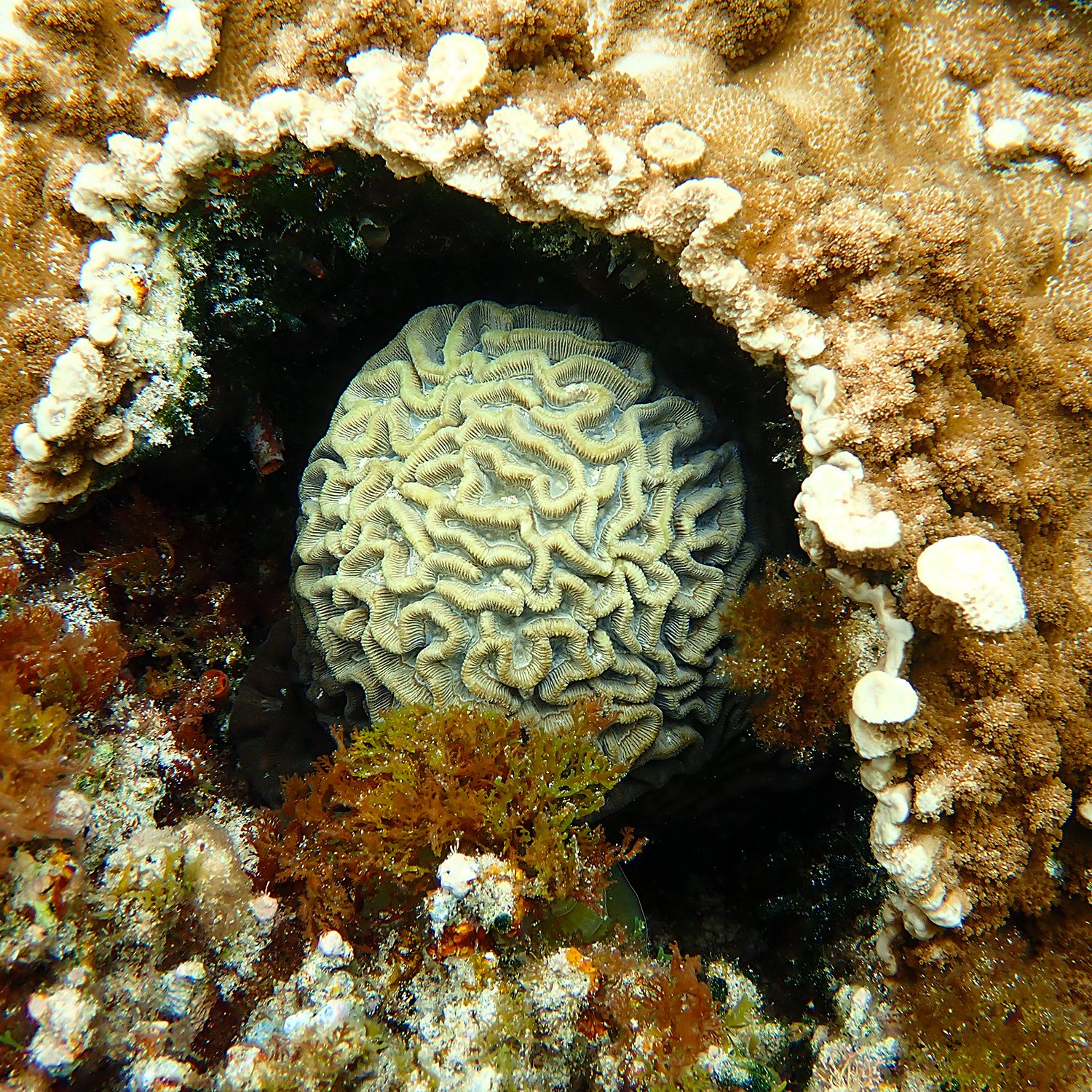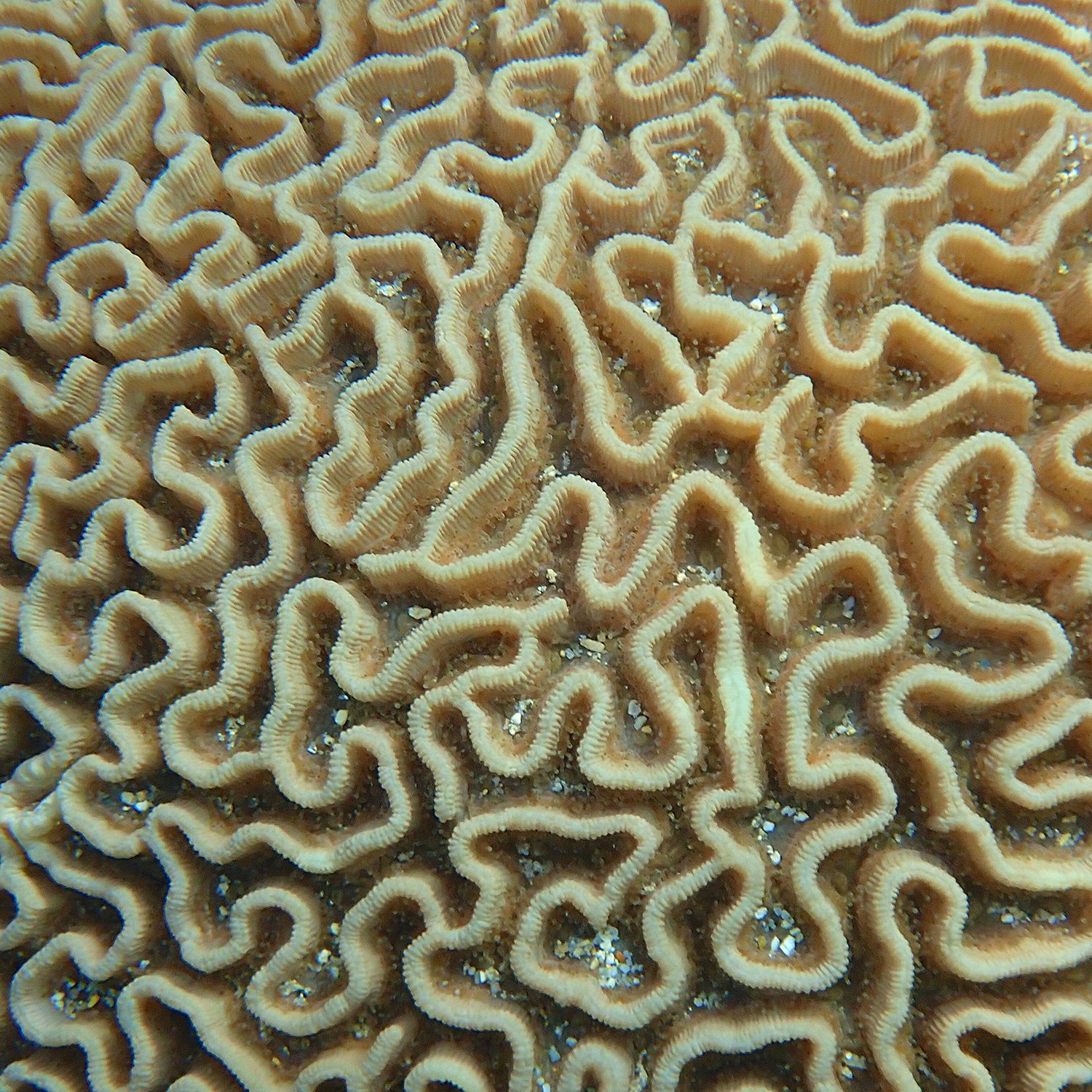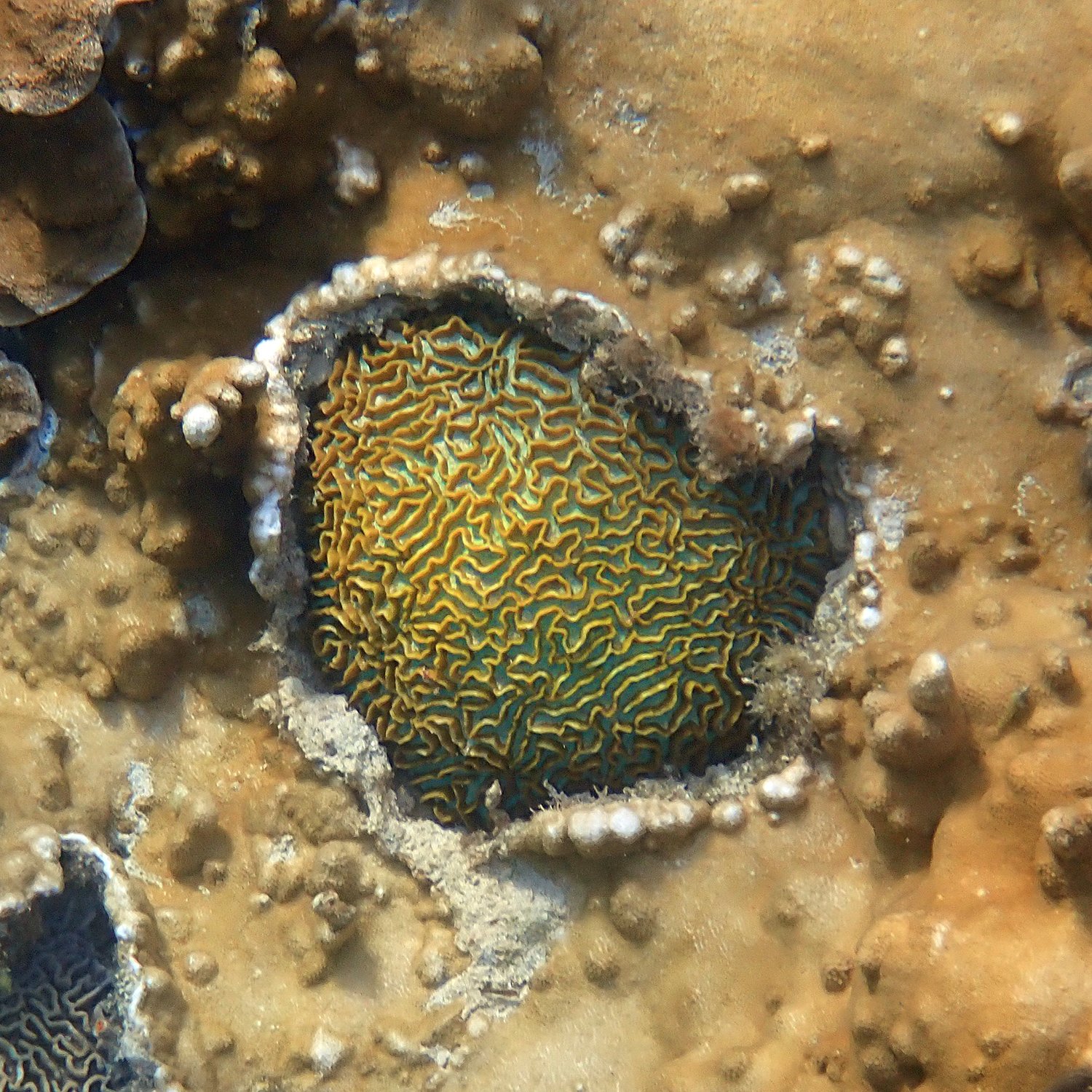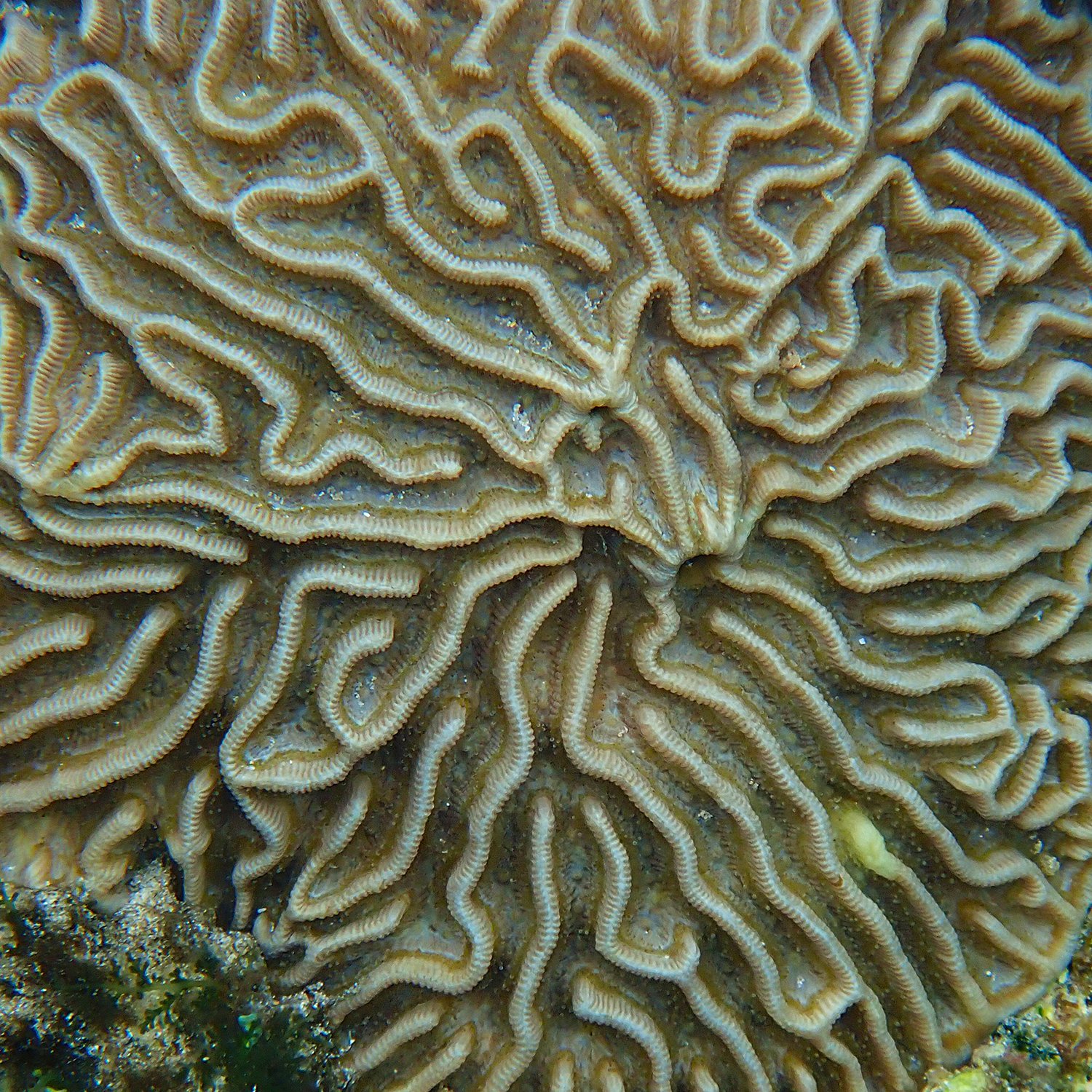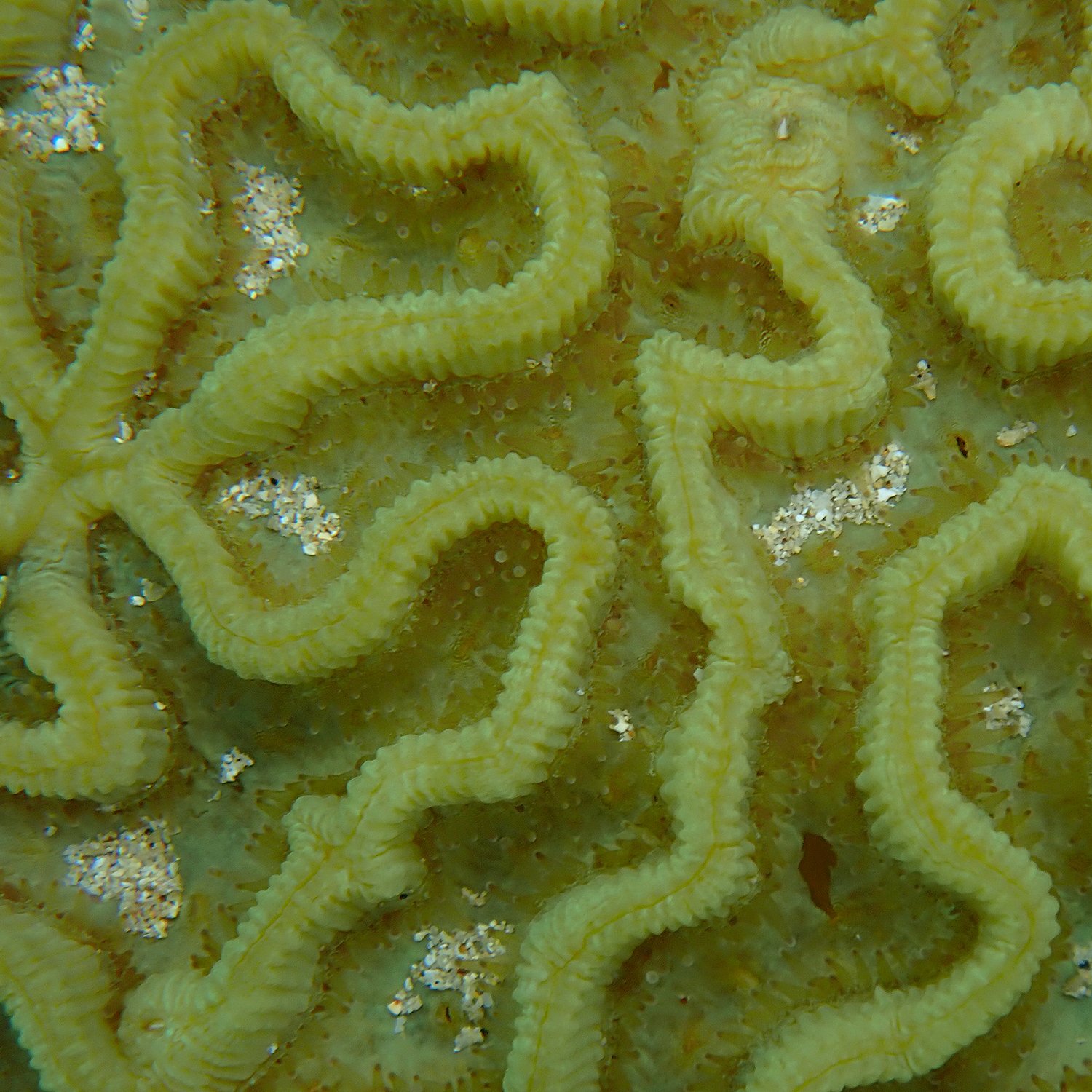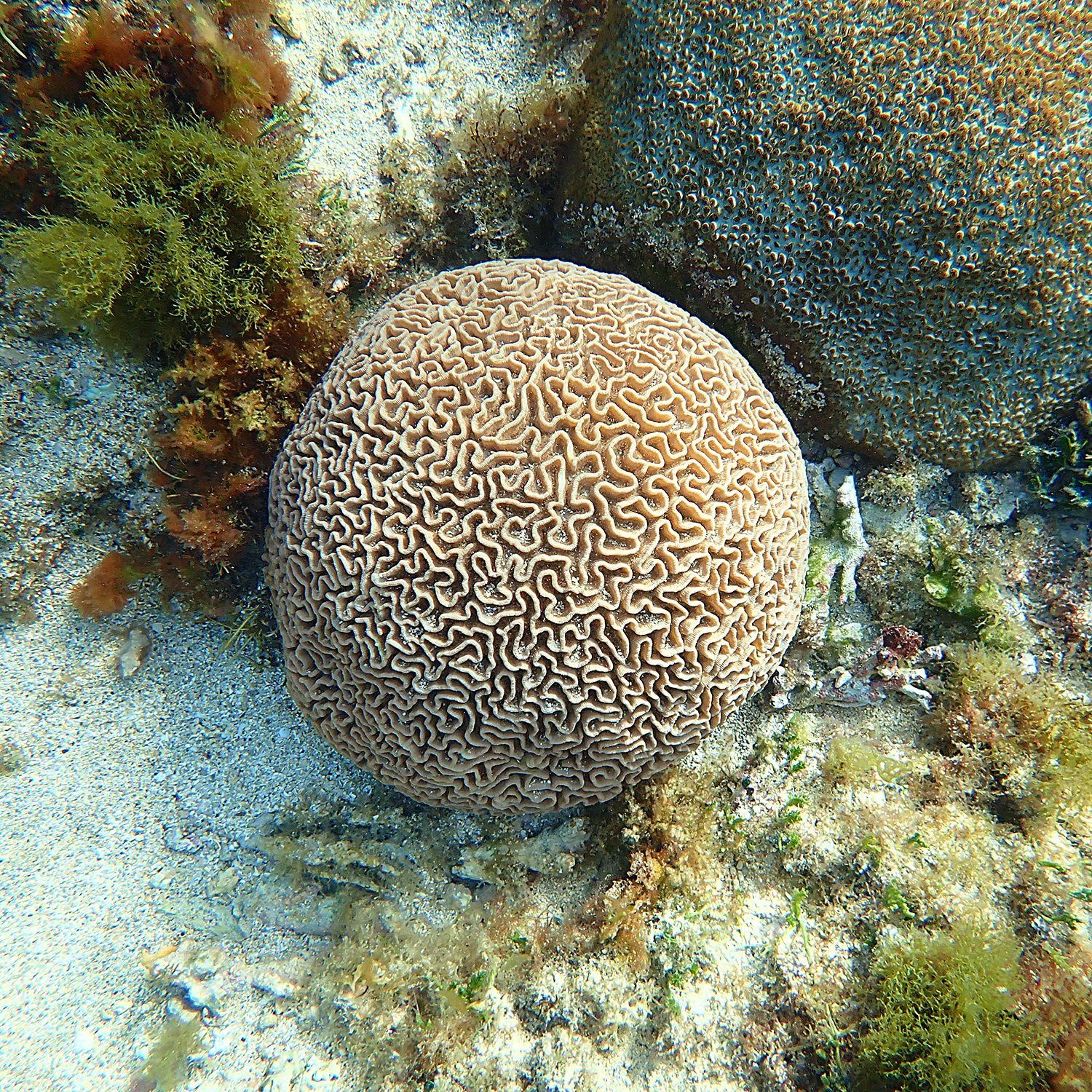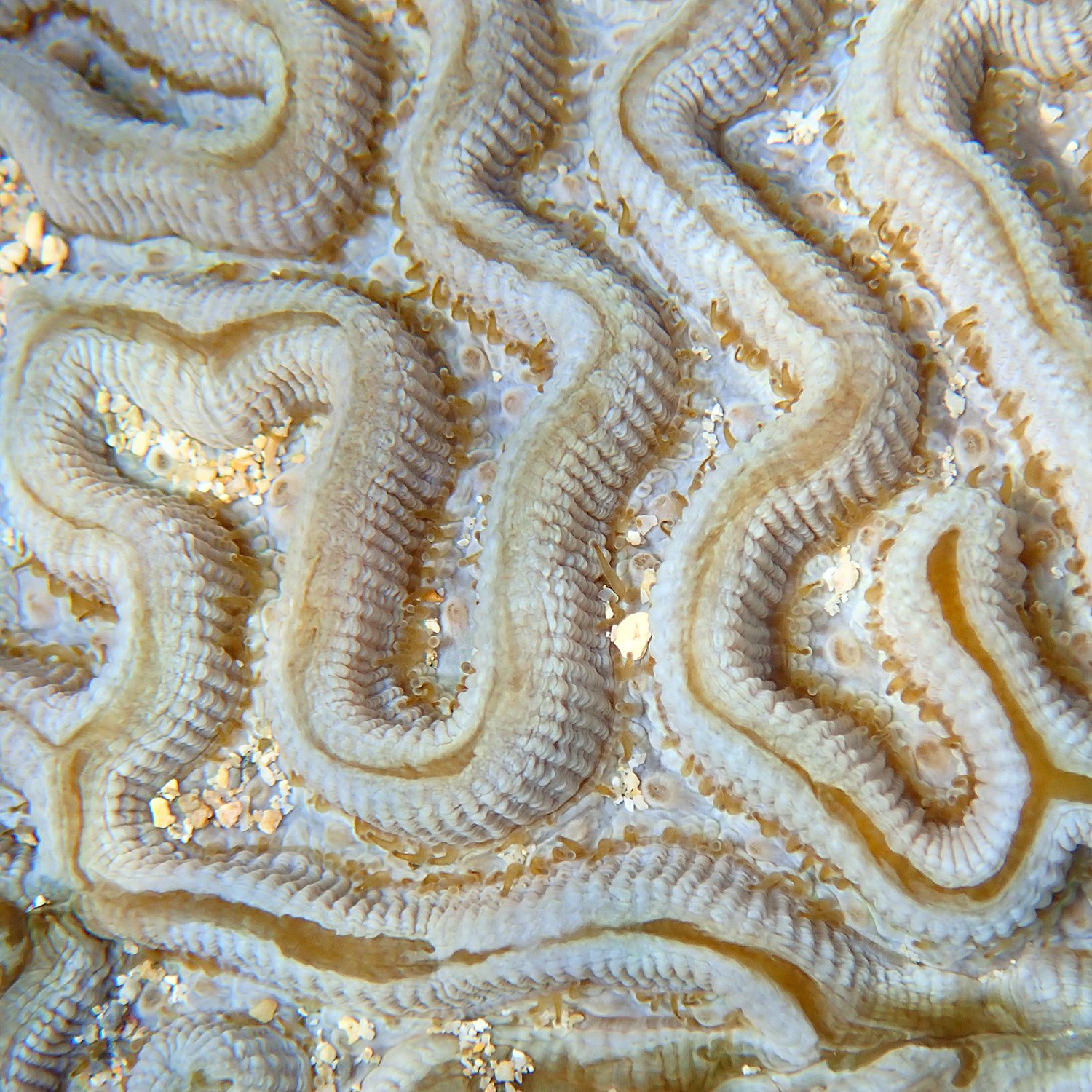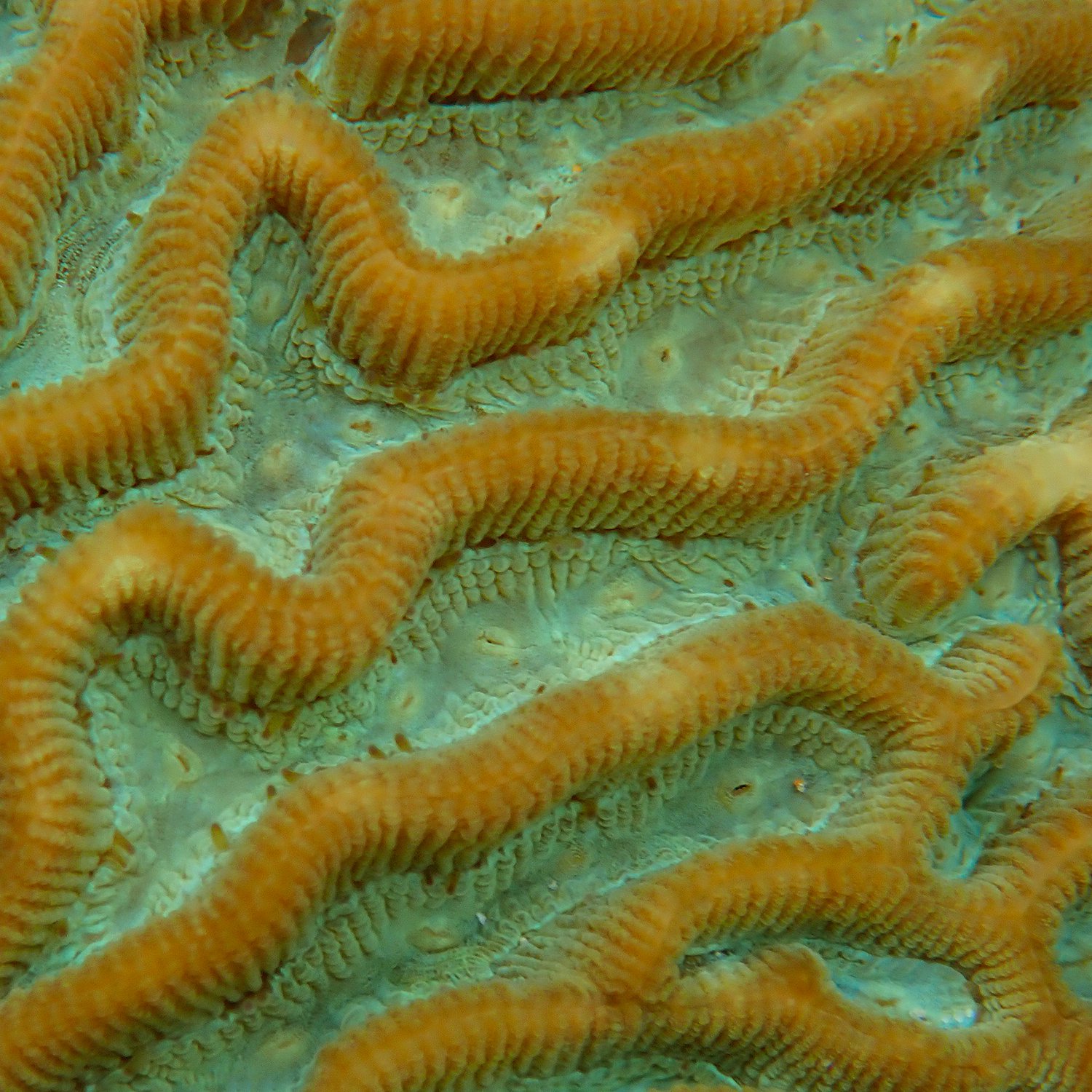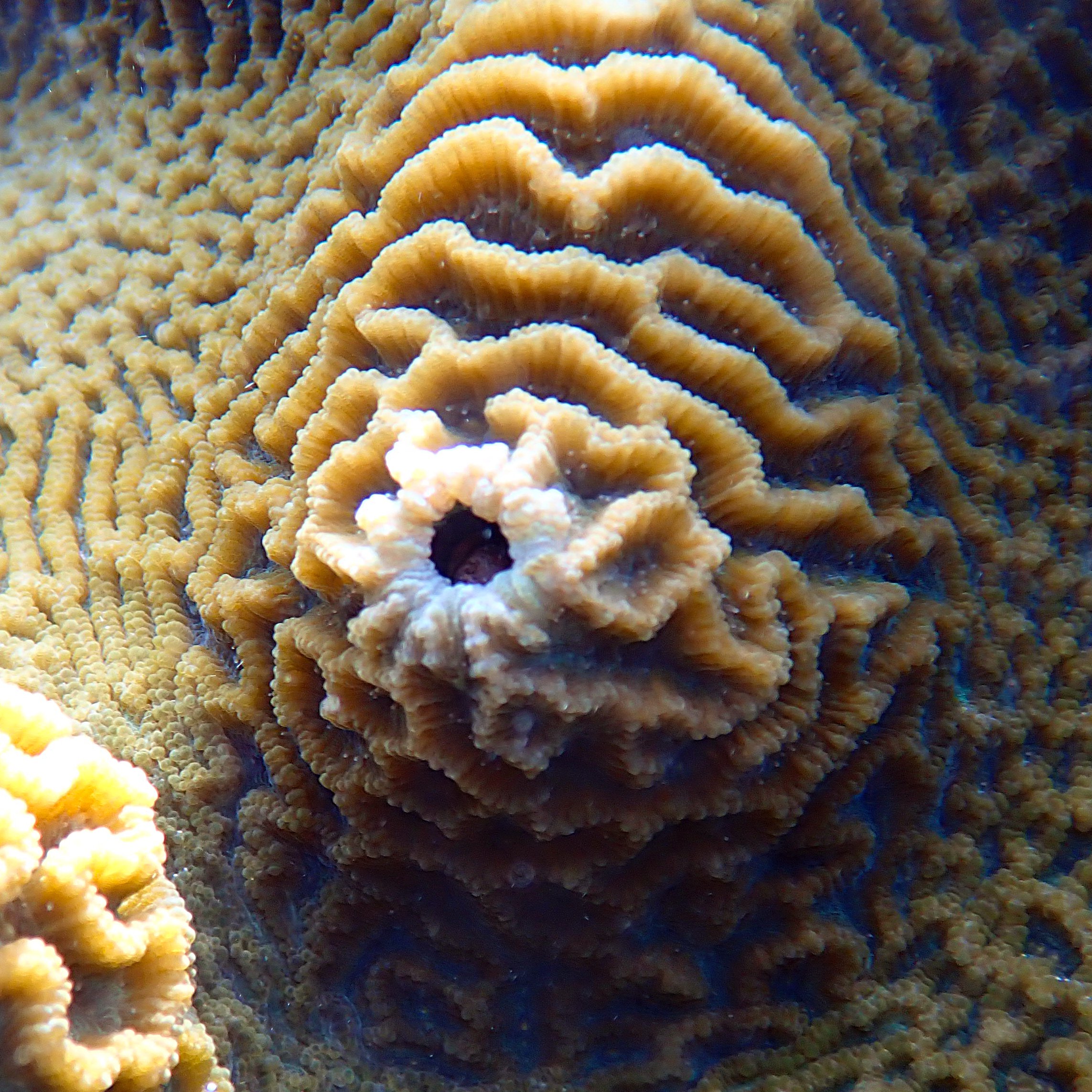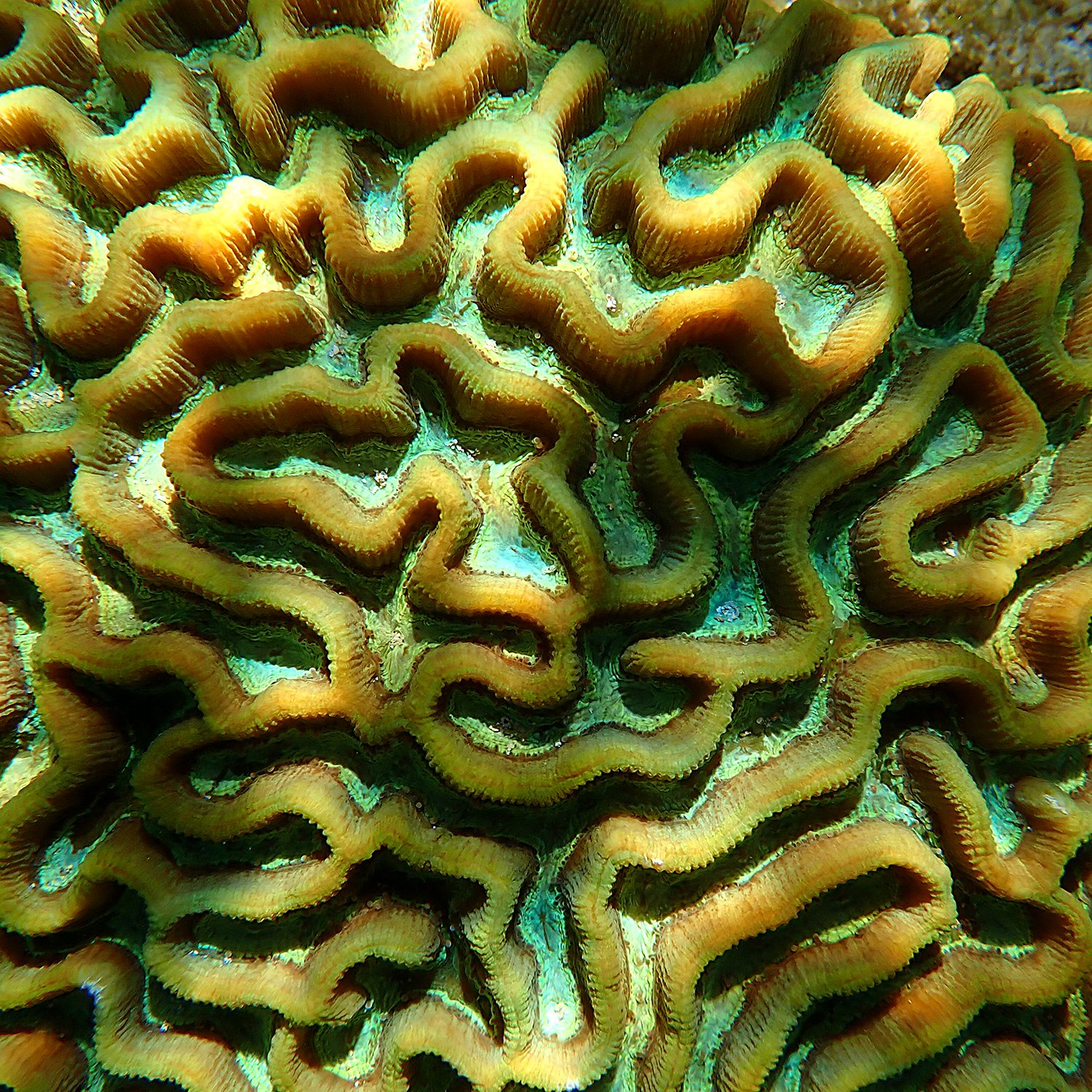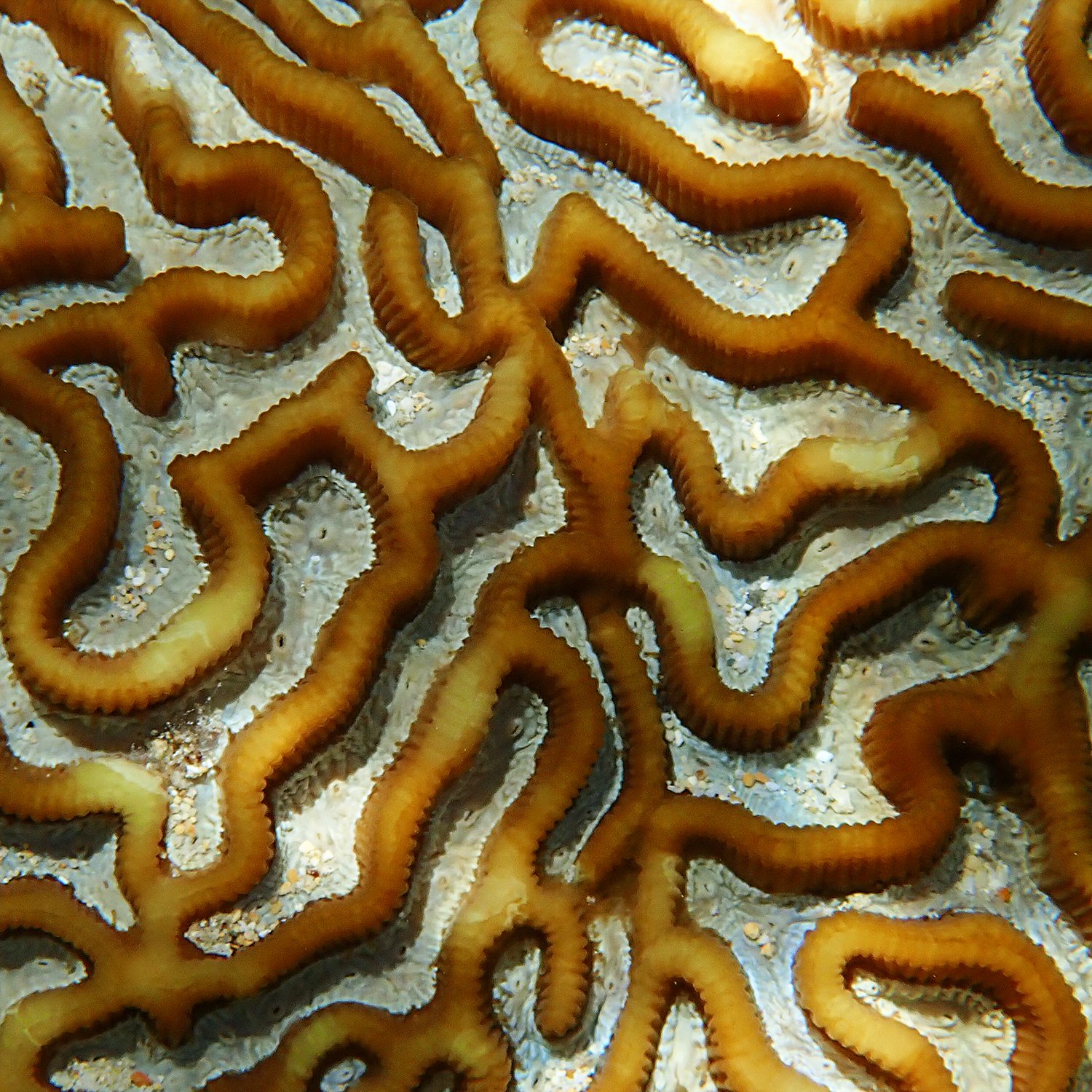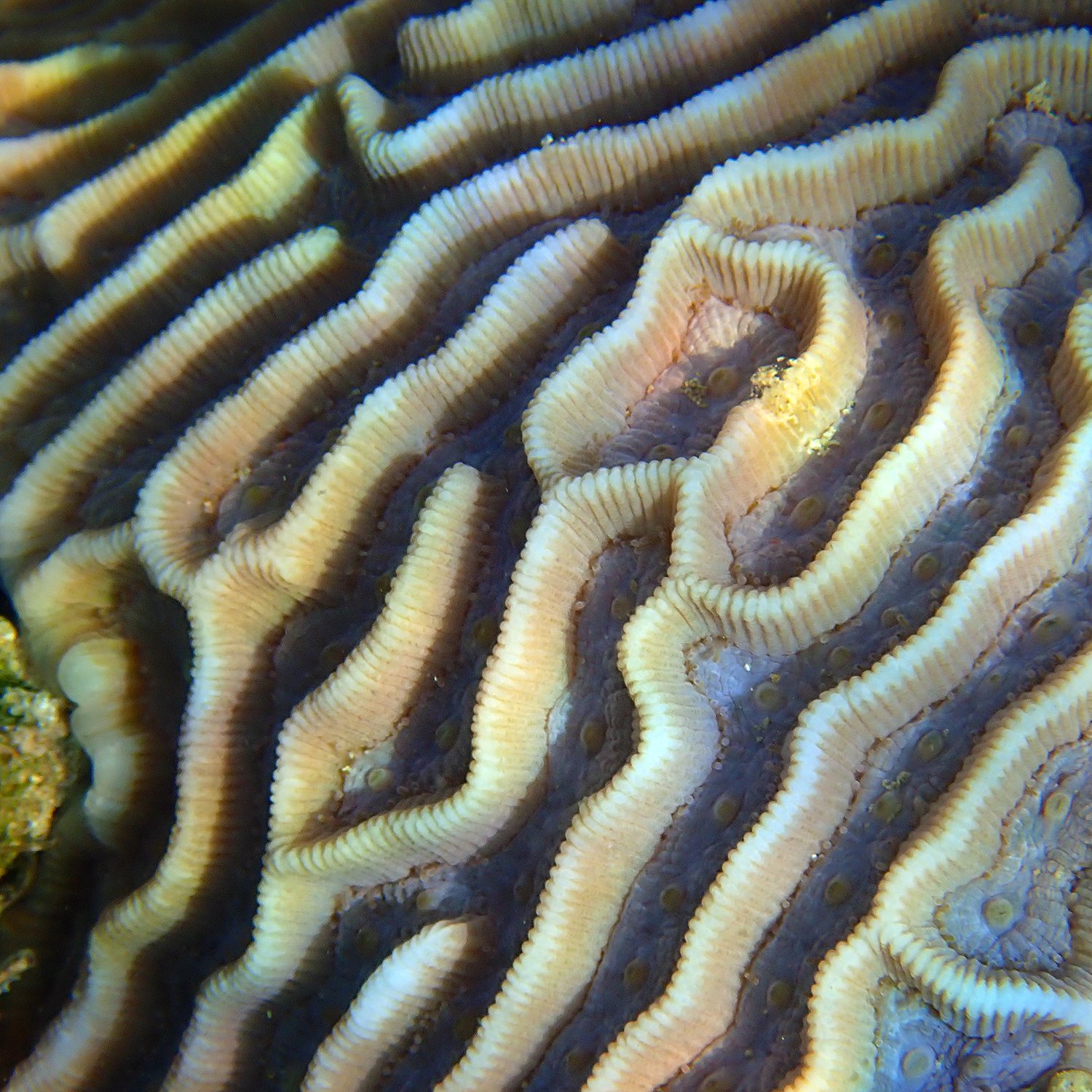We have some beauties when it comes to brain corals inside our lagoons. They are quite amazing, and a hugely important part of a healthy reef. So here’s all you need to know about them!
Brain corals are a hard coral that look like stone boulders but are actually lots of small animals all living together, and they are called brain corals because many look like … brains! Some of them can grow massive – as high as a couple of metres, although I am sure we may have some bigger ones here on Norfolk Island. (I guess I’d better take out my tape measure next time!) They grow slowly, with some thought to be an amazing 900 years old.
A brain coral is made up of hundreds of small coral polyps – which are soft fleshy tubes with tentacles surrounding a mouth – living together. In fact, they are related to sea anemones and jellyfish. In brain corals these polyps are highly interconnected with each other in the colony, sharing food, oxygen and hormones. This makes them efficient, but it also makes them vulnerable; if one polyp gets sick, it can quickly spread around a colony. (A bit like Omicron in a crowded room!) Some researchers think that this interconnectedness makes them more advanced than other corals.
As with other corals, brain corals have a symbiotic relationship with tiny zooxanthellae, or algae, that live inside the polyps. The corals provide protection for the algae, which like other plants photosynthesise, providing oxygen to the coral in return. Therefore, it stands to reason that these corals like clear, shallow water with plenty of sunlight – a key ingredient for the algae to make food.
The polyps in the colony are genetically identical. They secrete a hard limestone (calcium carbonate) exoskeleton, one generation building on another to create an super strong structure, which, as it gets larger, provides a strong foundation for the reef. This makes it an incredibly important reef builder.
Brain corals are an important part of a reef’s structure. During storms, a coral reef can absorb as much as 97 per cent of the waves’ energy, so this makes them a fundamental species when it comes to protecting our coasts and other marine life.
As well as getting food from the algae that live among them, at nighttime brain corals extend their tentacles to catch passing organisms to supplement their diet.
Brain corals will jockey for space, defending their patch against other coral intruders with long stinging sweeper tentacles, which also often come out at night, although I have seen this taking place during the daytime as well. You can read more about this behaviour in an earlier blog post, here.
Any organism that can live as a colony for as long as 900 years deserves some serious respect!

